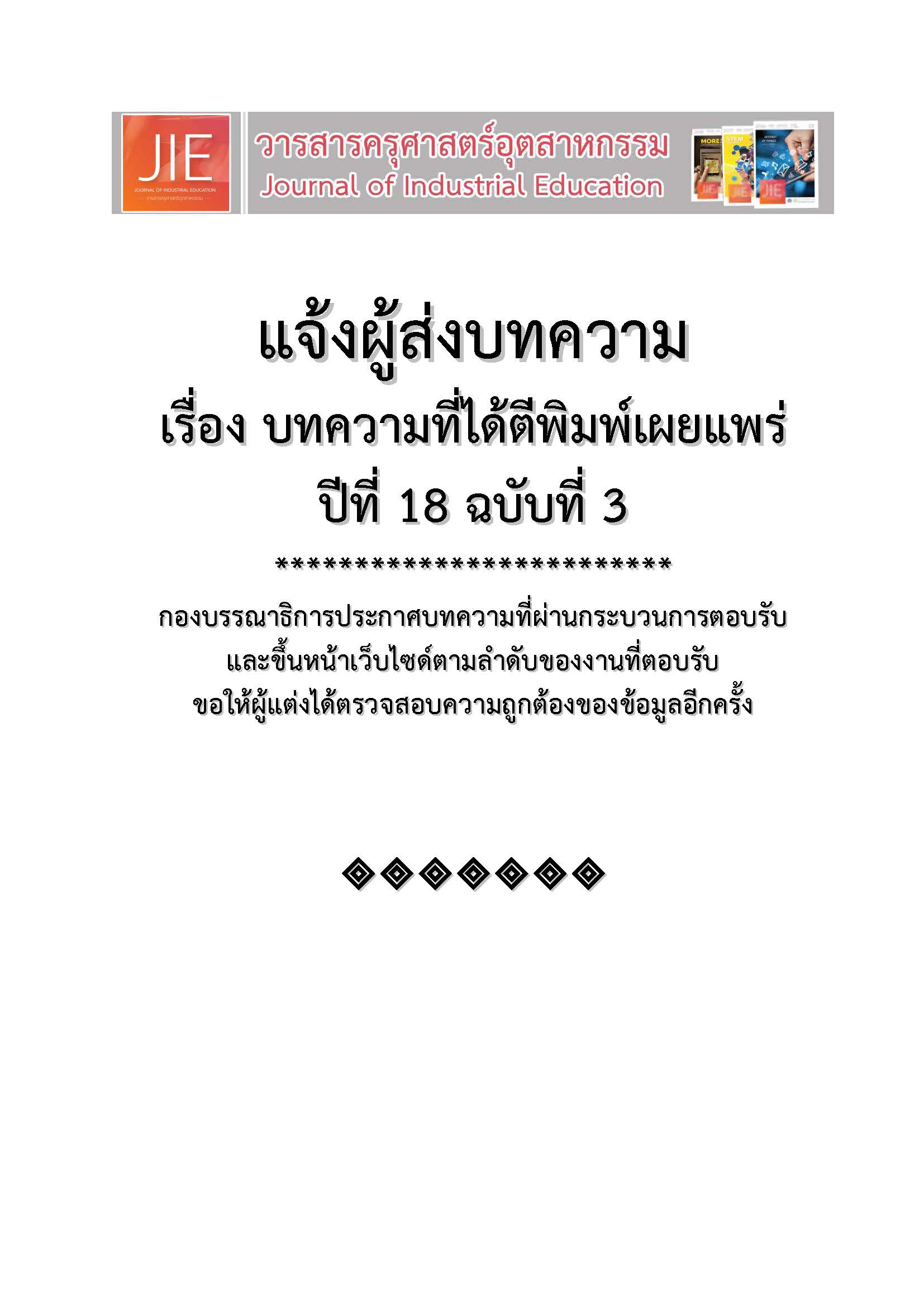SMALL-SOURCE GLARE FOR THAI ELDERLY
Keywords:
Discomfort glare, Thai elderly, Limiting Glare IndexAbstract
There are two main objectives of this study. The first objective is to investigate small-source glare formulae for Thai elderly. The second objective is to investigate limiting glare index for small source for Thai elderly in areas of residential building. There were two main studies for this purposes. To investigate the small-source glare formulae for Thai elderly, the first study was conducted in a laboratory room at Faculty of Architecture, Kasetsart University, Thailand. To explore limiting glare index for Thai elderly in residential building, the second study was a field survey of 7 areas in 9 nursing homes in Thailand. Results of this study purposed the small-source glare formulae for Thai elderly. The results also suggested limiting glare indices for Thai elderly for particular areas in residential building. In overall, it was found that limiting glare indices (Limiting UGRa) for Thai elderly were lower than limiting UGR values from international standards around 1-7 units.
References
Stone, P. T. & Harker, S. D. P. 1973. Individual and group differences in discomfort glare responses. Lighting research and technology, 5(1), p. 41-54.
Manabe H. 1976. The assessment of discomfort glare in practical lighting installations. Oteman economics studies no. 9. Osaka: Oteman Gakuin University.
Boyce, P.R. 1981. Human factors in lighting. London: Applied Science Publishers Ltd.
CIE. 1995. Discomfort glare in interior lighting. CIE publication 117. Vienna: Bureau Central de la CIE.
IESNA. 2016. ANSI/IESNA recommended practice-28-2016 lighting and the visual environment for seniors and low vision population. New York: Illuminating Engineering Society of North America.
IES. 1967. Technical report no. 10 evaluation of discomfort Glare: The IES glare index system for artificial lighting installations. London: IES.
Christoffersen, J. 2001. Monitoring procedures for the assessment of daylighting performance of buildings. A report of IEA SHC task 21 / ECBCS annex 29. Bruxelle: International Energy Agency.
Iwata, T., Shukuya, M. & Somekawa, N. 1992. Experimental study on discomfort glare caused by windows: Subjective response to glare from simulated windows. Journal of architecture, planning and environmental engineering, 432, p. 21-30.
Iwata, T. & Tokura, M. 1998. Examination of limitations of predicted glare sensation vote (PGSV) as a glare source- towards a comprehensive development of discomfort glare evaluation. Lighting research and technology, 30, p. 81-88.
Bechtel, R. B., Marans, R.W. and Michelson, W. 1987. Methods in environmental and behavioral research. New York: Van Nostrand Reinhold.
Mardaljevic, J. 2000. Simulation of annual daylighting profiles for internal illuminance. Lighting research and technology, 32(3), p. 111-118.
Maamari, F. & Fontoynont. M. 2003. Analytical tests for investigating the accuracy of lighting programs. Lighting research and technology, 35(3), p. 225-239.
Veitch, J. A. & Newsham, G. R. 2000. Exercised control, lighting choices, and energy use: an office simulation experiment. Journal of environmental psychology, 20(3), p. 219-237.
Boyce, P.R., Veitch, J.A., Newsham, G.R., Myer, M. & Hunter, C. 2006. Lighting quality and office work: a field simulation study. Lighting research and technology, 38(3), p. 191-223.
Newsham, G.R., Veitch, J.A., Arsenault, C.D. & Duval, C.L. 2003. Lighting for VDT workstations 1: effect of control on energy consumption and occupant mood, satisfaction and discomfort. IRC research report RR-165. Ottawa, ON: NRC Institute for Research in Construction.
Newsham, G.R., Arsenault, C., Veitch, J.A., Tosco, A.M. & Duval, C. 2005. Task lighting effects on office worker satisfaction and performance and energy efficiency. Leukos, 1(4), p. 7-26.
Yonemura, G.T. (1981). Criteria for recommending lighting levels. Lighting research and technology, 13(3), p. 113-129.
Hopkinson, R.G. 1957. Evaluation of glare. Illuminating engineering, 12, p. 305-316.
CIBSE. 2013. LG09 Lighting guide 09: lighting for communal residential buildings. London: CIBSE.
Boyce, P.R. 2003. Lighting for the elderly. Technology and disability, 15, p. 165–180.
Downloads
Published
How to Cite
Issue
Section
License
"The opinions and contents including the words in papers are responsibility by the authors."
"ข้อคิดเห็น เนื้อหา รวมทั้งการใช้ภาษาในบทความถือเป็นความรับผิดชอบของผู้เขียน"



